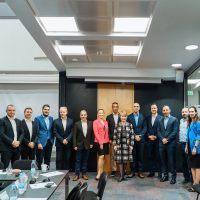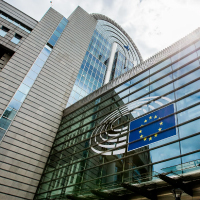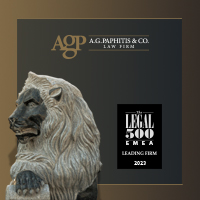
In today’s world, criminal organizations and terrorists generate huge amounts of money by taking part in criminal activities and financial crime.
Some people have labeled this money as ‘dirty money’ and left as is, would raise the suspicions of law enforcers and leaves a trail of evidence, therefore in order for this money to be useful, it needs to be ‘cleaned’…laundered.
Basically these illegal profits need to be disguised or else risk seizure.
This is known as money laundering.
Money laundering can be defined as:
- “The conversion or transfer of property, knowing it is derived from a criminal offense, for the purpose of concealing or disguising its illicit origin or of assisting any person who is involved in the commission of the crime to evade the legal consequences of his actions;
- The concealment or disguising of the true nature, source, location, disposition, movement, rights with respect to, or ownership of property knowing that it is derived from a criminal offense; or
- The acquisition, possession or use of property, knowing at the time of its receipt that it was derived from a criminal offense or from a participation in a crime.”
(Palermo Convention)
There are three main processes for laundering money:
- Placement: moving of funds elsewhere, usually into the financial system
- Layering: This is a very complex stage and it is the point where the origin of the funds needs to be hidden. Hide the trail so to speak. Usually this could be sending funds electronically from one country to another, separate them into investments, and keep moving the money in order to take advantage of loopholes.
- Integration: This is where the funds are fully integrated into the legal economy and therefore can be used for any purpose.
With globalization and ever improving internet solutions, funds can almost instantly move from one country to another across borders. This is why all financial companies must develop their own written anti-money laundering procedures and programs in accordance with all necessary regulations.
The purpose of this is to ensure that there are strict policies and controls capable of detecting as much as possible the cause and reporting of money laundering.
In order for these policies to be put into place, there must be compliance officer who has the power to effect changed in the policies and communicate any problems to senior management and regulatory bodies.
This is a separate role and the compliance officer should not hold another position in the company if it relates to any functional area.
A company has to also make sure employees have yearly training on the issue and this training must be kept on file. Occasionally there is a test given to employees on financial crime and KYC (know your client) procedures.
What exactly is KYC?
It is a rule and regulation that any client of a financial company should provide specific information such as name, address, ID, personal financial details…etc., to the company in which he/she plans on doing business. If the entity is a company, verification is usually accomplished through obtaining the articles of incorporation, corporate resolutions, memorandum and articles of association, operating agreements for limited liability companies, and trust agreements for trusts.
This can be done by using documentary or non-documentary methods.
Usually all records that have been collected should be stored for a period of five years from the date an account is opened.
All this, and the movement of money should be monitored carefully. The location in which money is being moved from should be checked against black lists showing blocked countries, volume needs to be checked, strange patterns…suspicious activity in general.
Suspicious activity has been listed as:
- “Deposits continuously made just below $10,000;
- Trading with no apparent regard for gain or loss;
- Wires to and from high risk countries, non-cooperative countries, or tax havens;
- Deposits followed by a request to wire money to a third party;
- The client requests that a transaction be processed in such a manner to avoid the firm’s normal documentation requirements;
- For no apparent reason, the customer has multiple accounts under a single name or multiple names, with a large number of inter-account or third party transfers;
- Client attempts to continually use non-allowed forms of deposit into the account;
- Client engaging in sudden withdrawal of funds or closing account(s) with subsequent wire transfers.”
All suspicious activity should be reported immediately to the organization in combating money laundering in your country.
Conscious avoidance of knowledge of money laundering is illegal. A company will be held responsible for not having taken appropriate action. It is therefore very important that anti money laundering rules are followed very carefully and are taken seriously.














